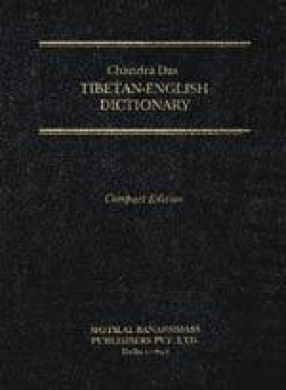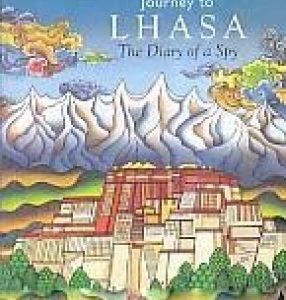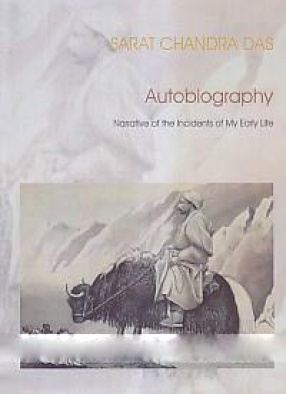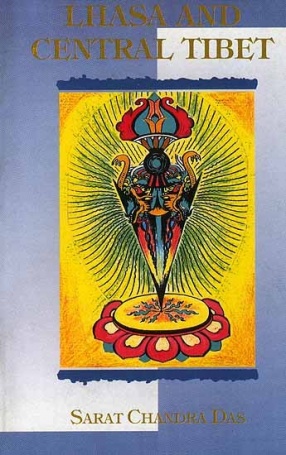Compiled from a large number of named Tibetan as well as standard Sanskrit works, dating from the 13 the century A.D., A Tibetan-English Dictionary represents the arduous labour of the author for 12 years. Here the Tibetan words are given in an alphabetical order, with their accepted Sanskrit equivalents, followed by teh English meaning. The meanings of all the technical terms are illustrated from extracts with exact references from Sanskrit-Buddhist and Tibetan works. The author has included modern Tibetan words which were not given by Koros and Jascheke. The great Tibetan scholars Rev. Graham Sandberg and Rev. a William Heyde have thoroughly revised the original and given a scientific look to the work, giving an impression of a Tibetan Cyclopaedia. A considerable number of Tibetan words at the head of paragraphs are found in larger type. this indicates either that the word is the root of all related terms, or that it is the most common word of teh series and thus ostensibly that from which the others have been derived. Two different arbitrary signs are found prefixed to many words. The author, it seems, has marked such words as he considered archaic or gone out of present use with a swastika, the those words deemed by him to have been imported into Tibetan from Sanskrit, whether directly or by derivation, he has distinguished by a double-headed dagger.
ABOUT THE AUTHOR Sarat Chandra Das
Sarat Chandra Das is among the greatest pioneers of explorer and discoverer who ever entered Tibet. Born in 1849, in Eastern Bengal, in a Hindu family of the Vaidya, he received his education from the Presidency College at Calcutta, where he became favourably known to Sir Alfred Croft, who ever since has been his friend and guide in his geographical and literary work, and by whose representations to the Indian Government it became possible for him to perform his important journeys into Tibet. Mr. Das made his first journey into Tibet in 1879 at the invitation of the Tashi Lhunpo Monastery. His second journey was made in the late 1881. In both the journey, Lama Ugyen Gyatso, a Tibetan lama from Sikkim and connected with the reigning family of the State, acted as his guide and companion. In his journeys to Tibet, beginning with Tashi Lhunpo, a great centre of leaerning, Sarat Chandra Das explored the valley of Yarlung, where Tibetan civilisation is said to have first made its appearance. The report of his journeys were printed in two separate publications by order of the Government of Bengal. They are entitled "Narrative of a Journey to Lhasa", and "Narrative of a Journey Round Lake Yamdok, and in Lhokha, Yarlung, and Sakya". for variuos reasons these reports were kept as strictly confidential documents by the Indian Government until about 1890. The amount of literary work accomplished by Sarat Chandra Das since his return from Tibet in 1883 is enormous. he brought back with him over two hundred volumes, manuscripts or block-prints, obtained from the great libraries in Tibet, a number of them in Sanskrit, and for past many contries lost in India. For his achievements, he was awarded the title of Rai Bahadur by the Government of India, and in 1887 the Royal Geographical Society awarded him the "Back Premium" for his geographical researches.








There are no reviews yet.